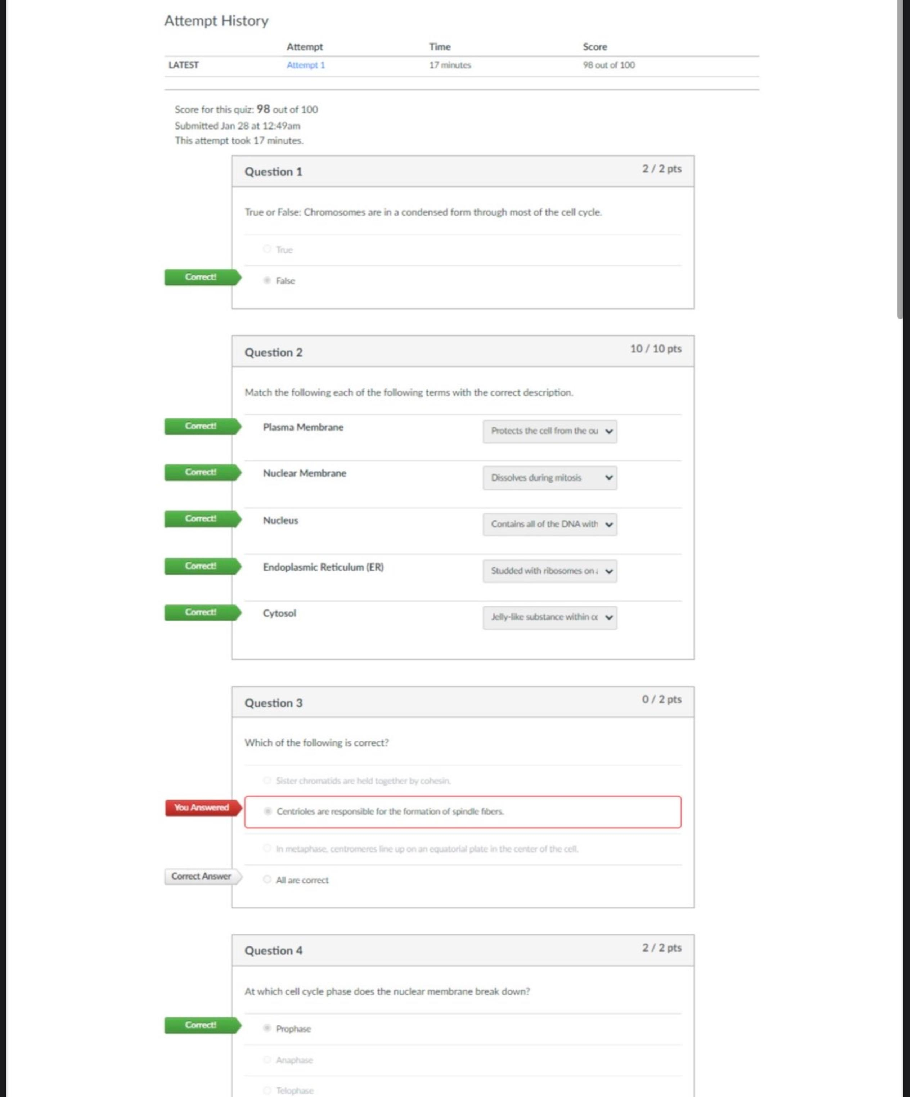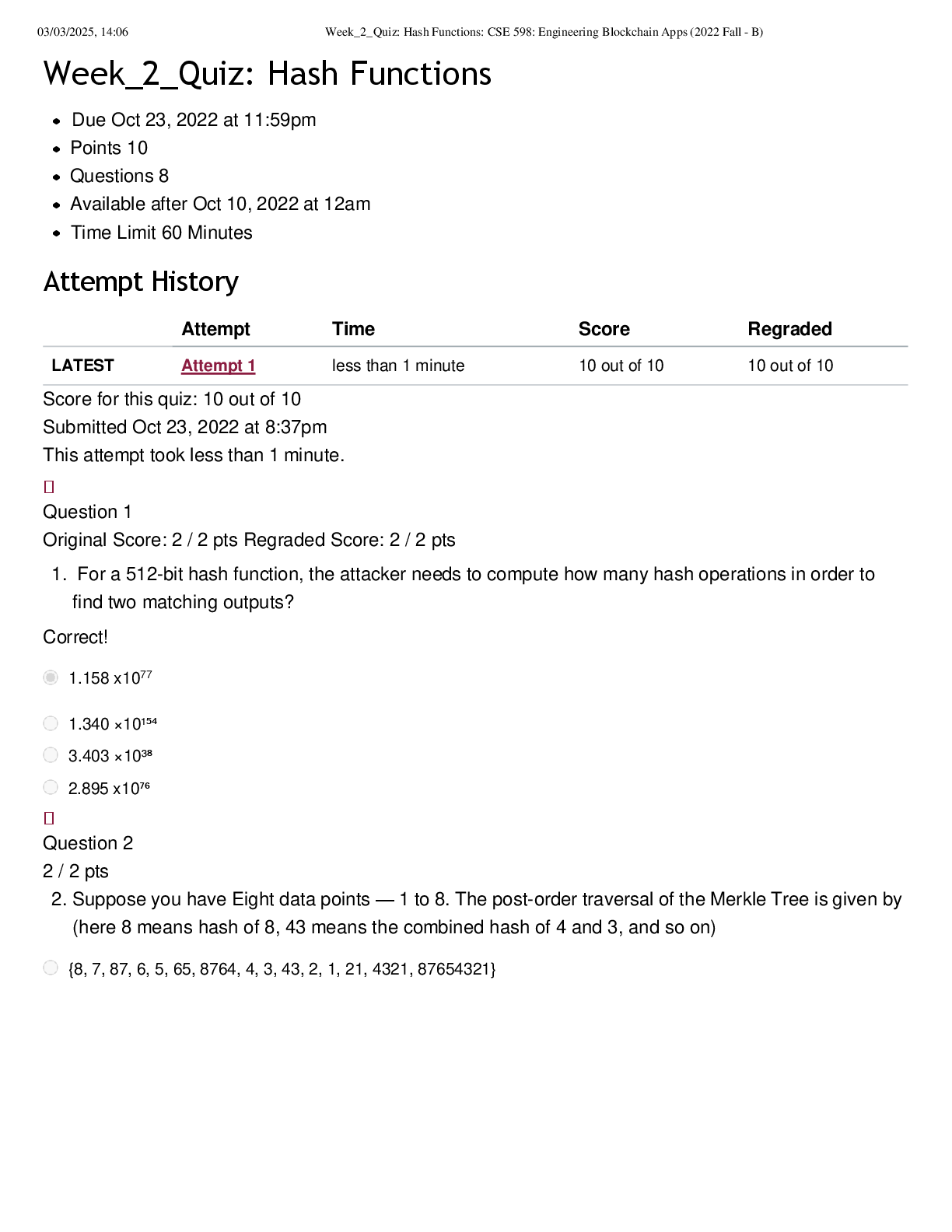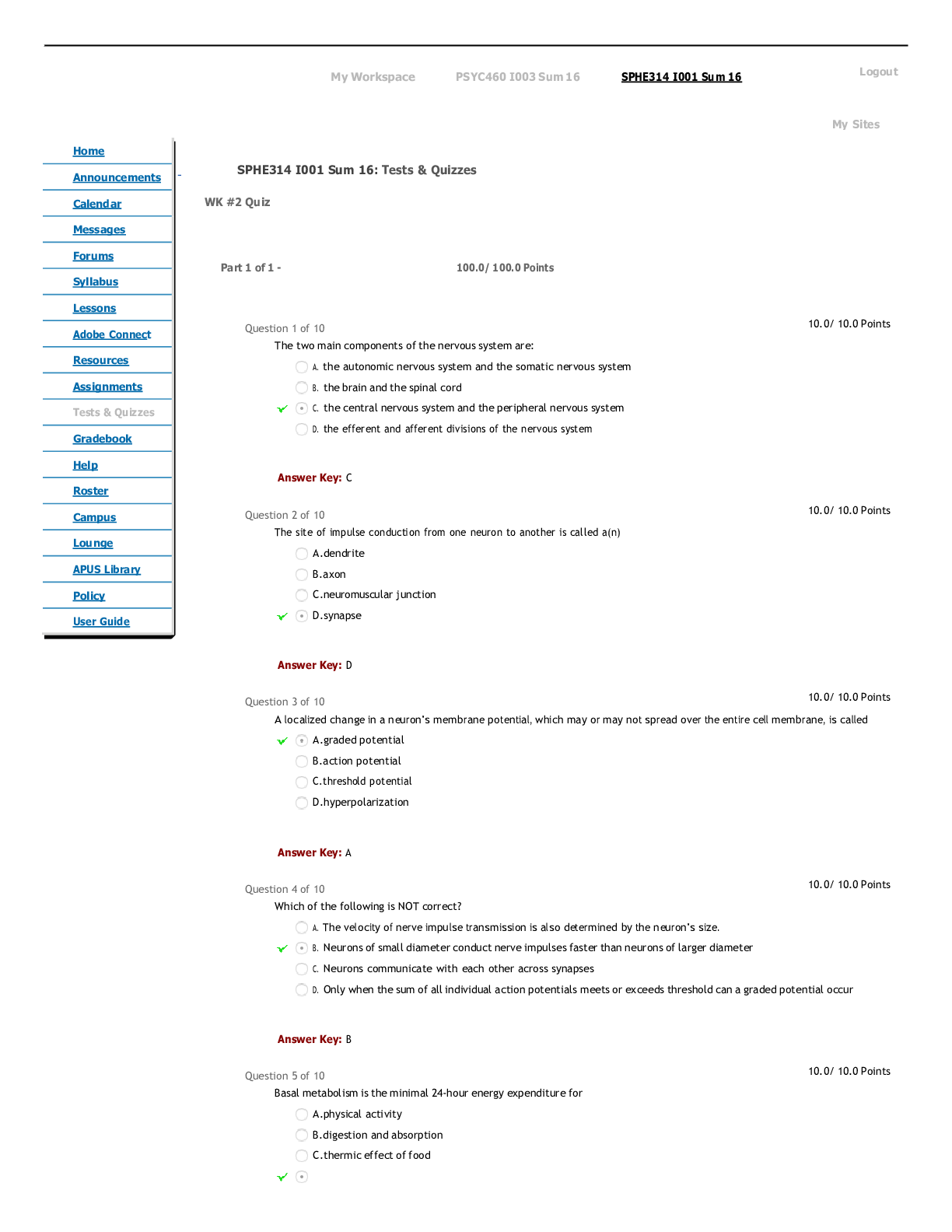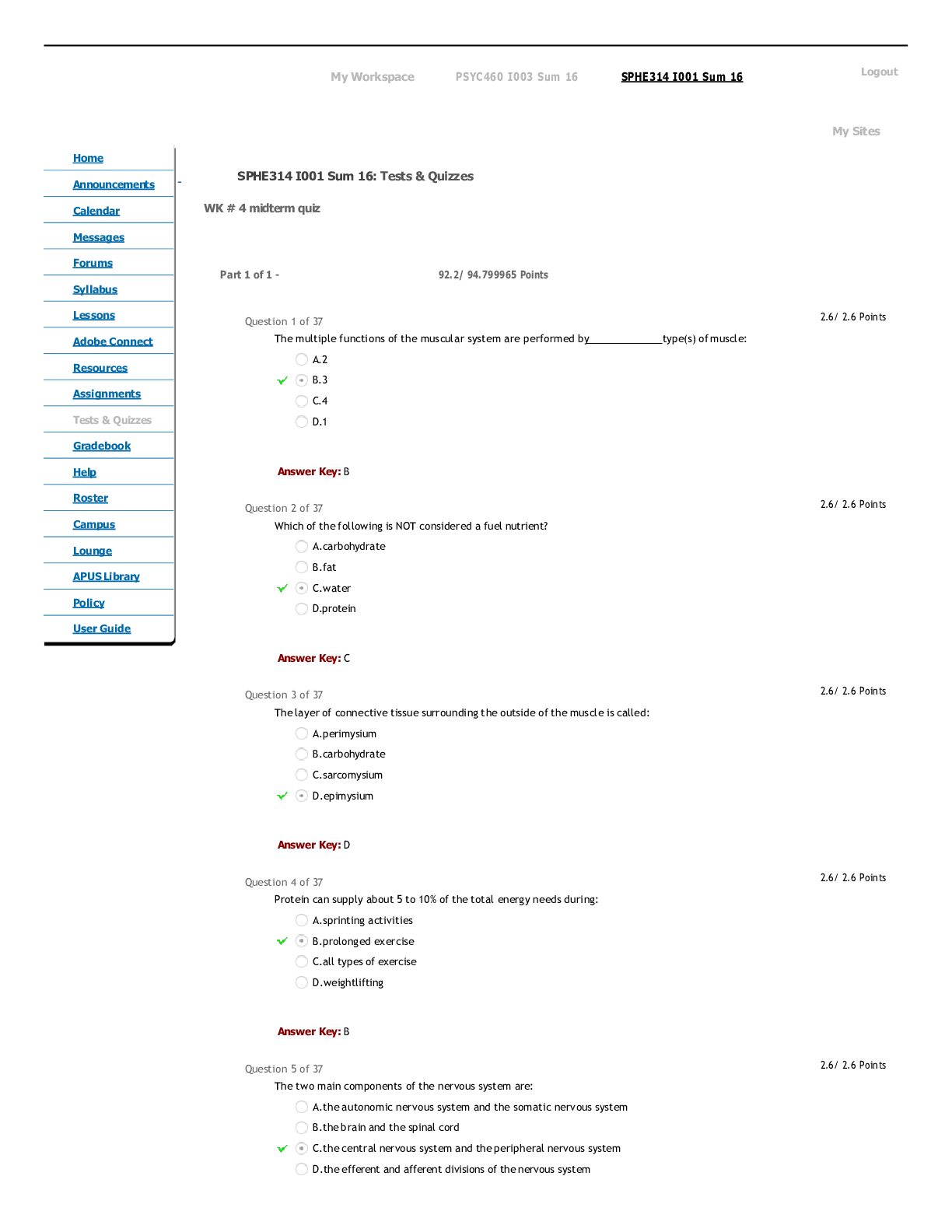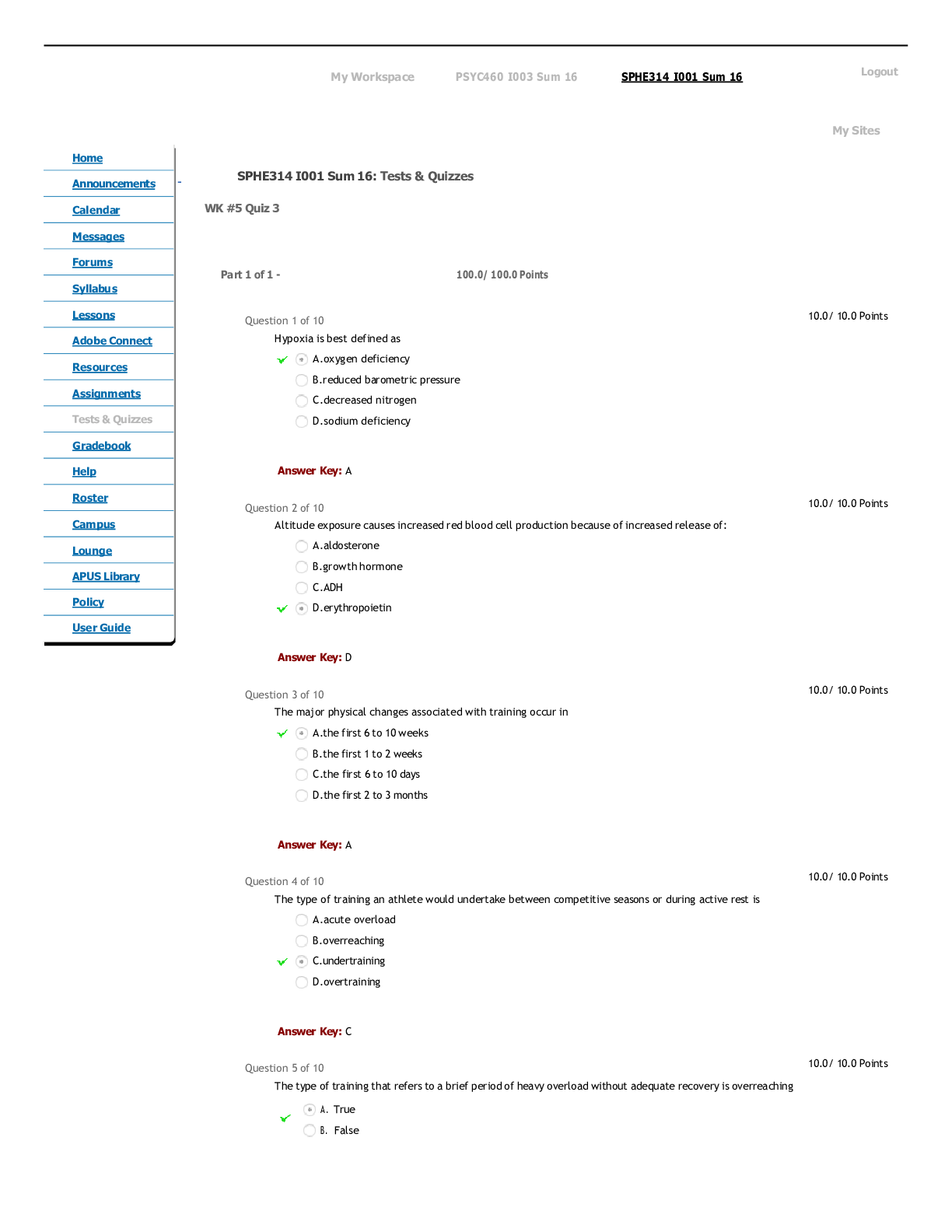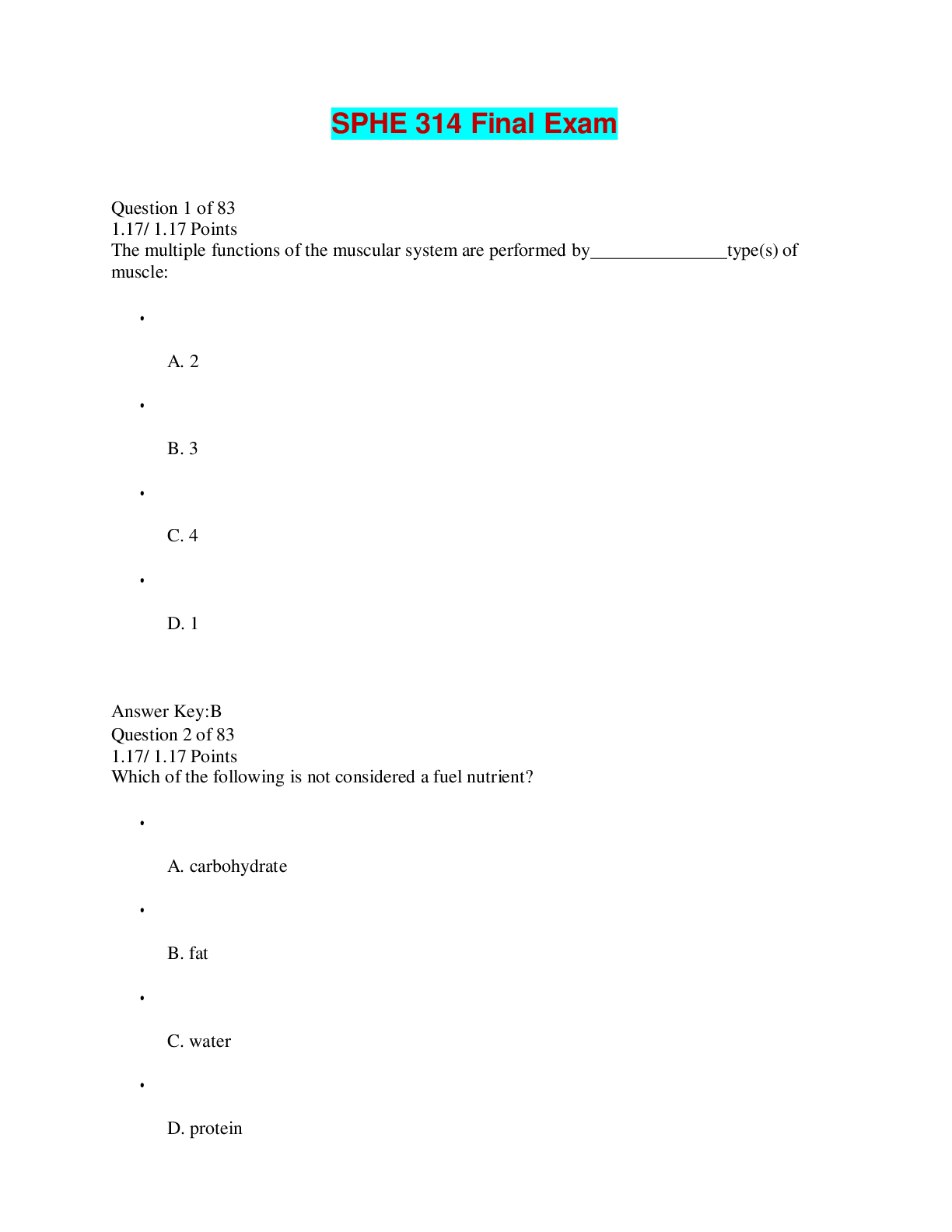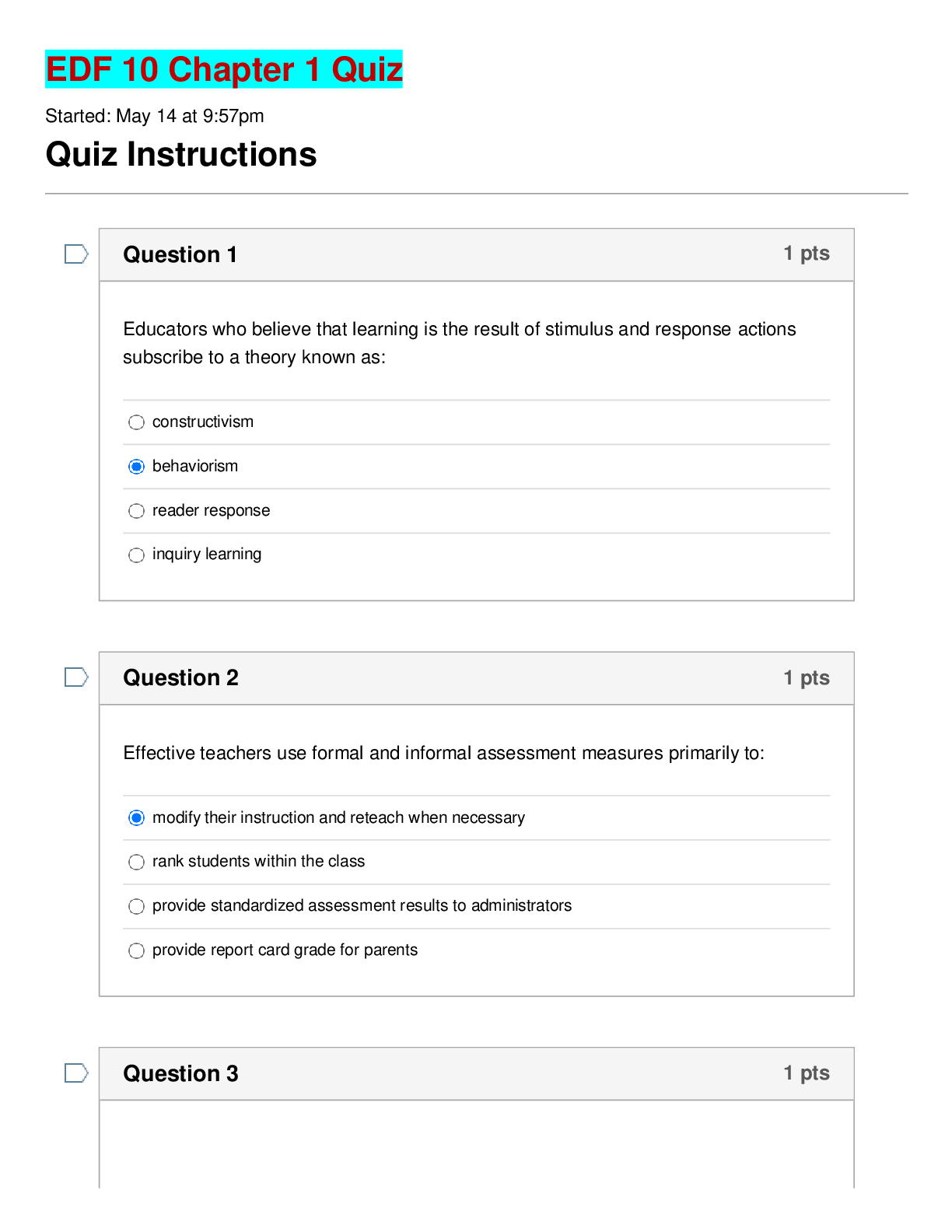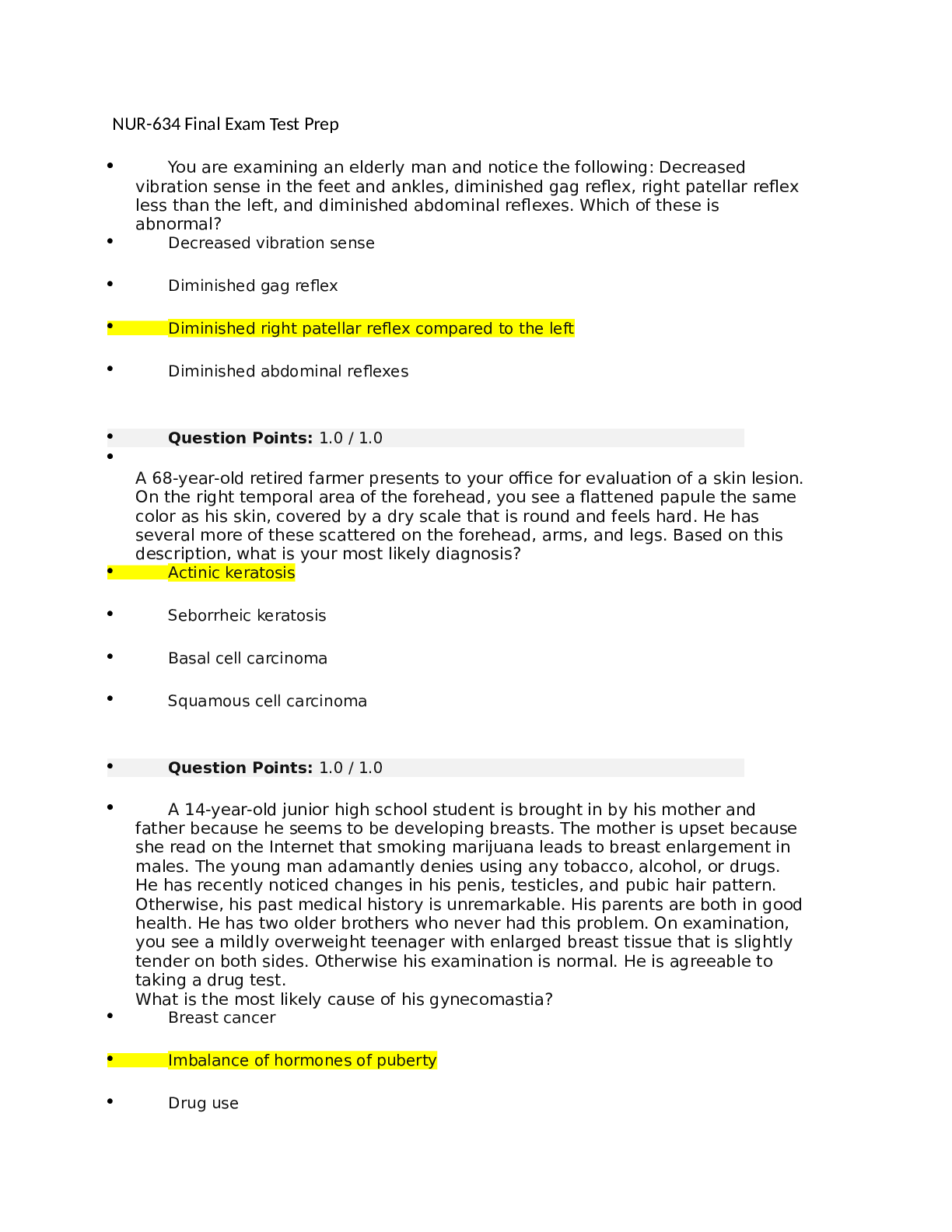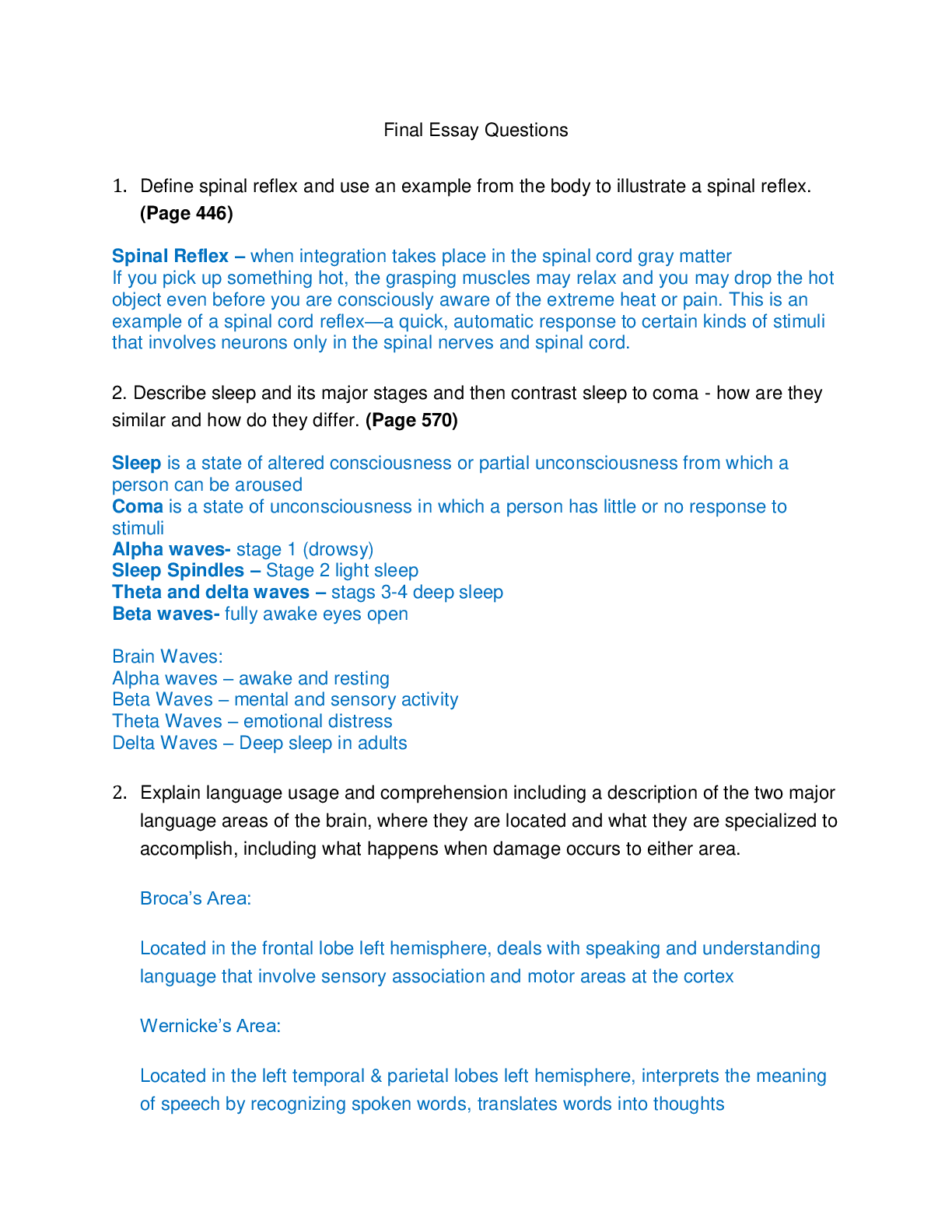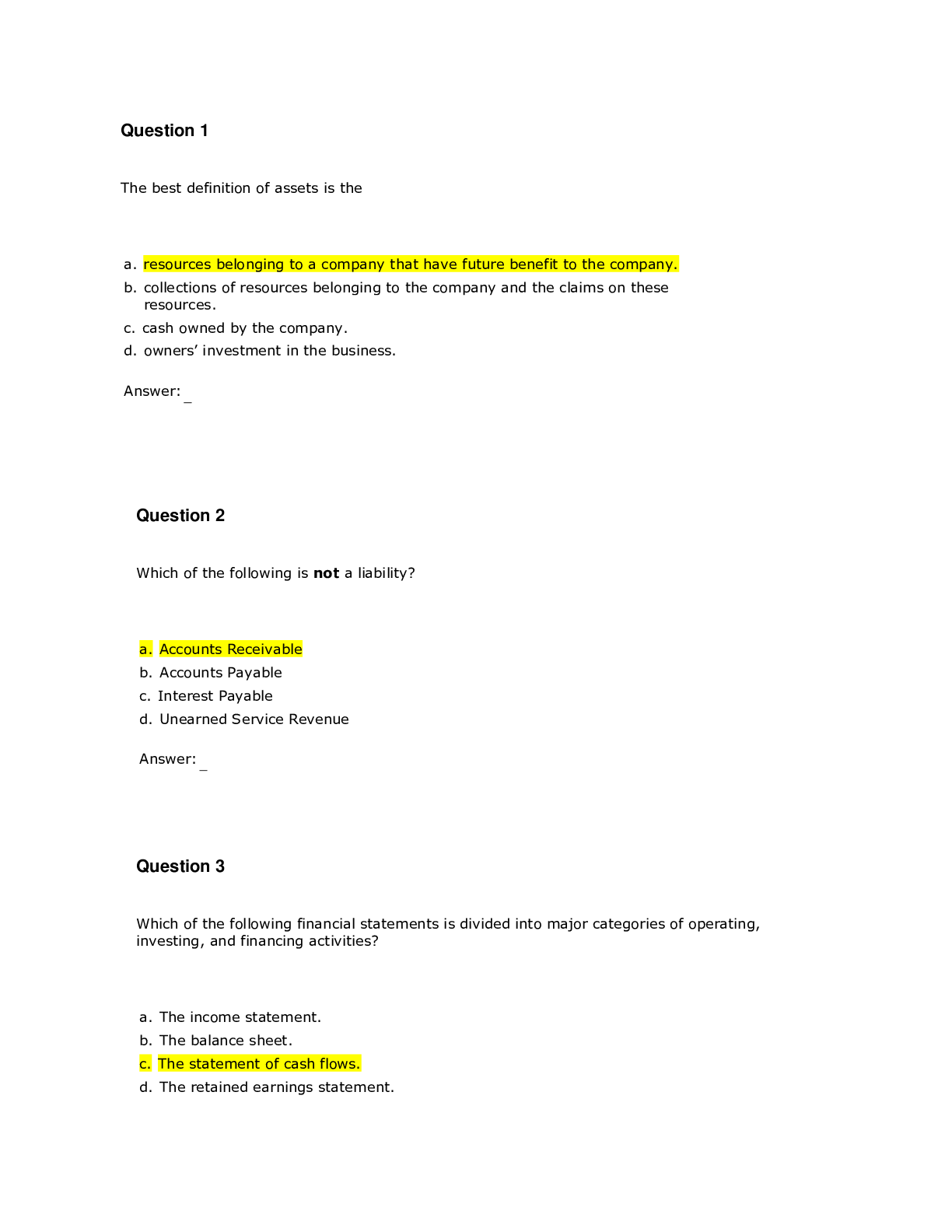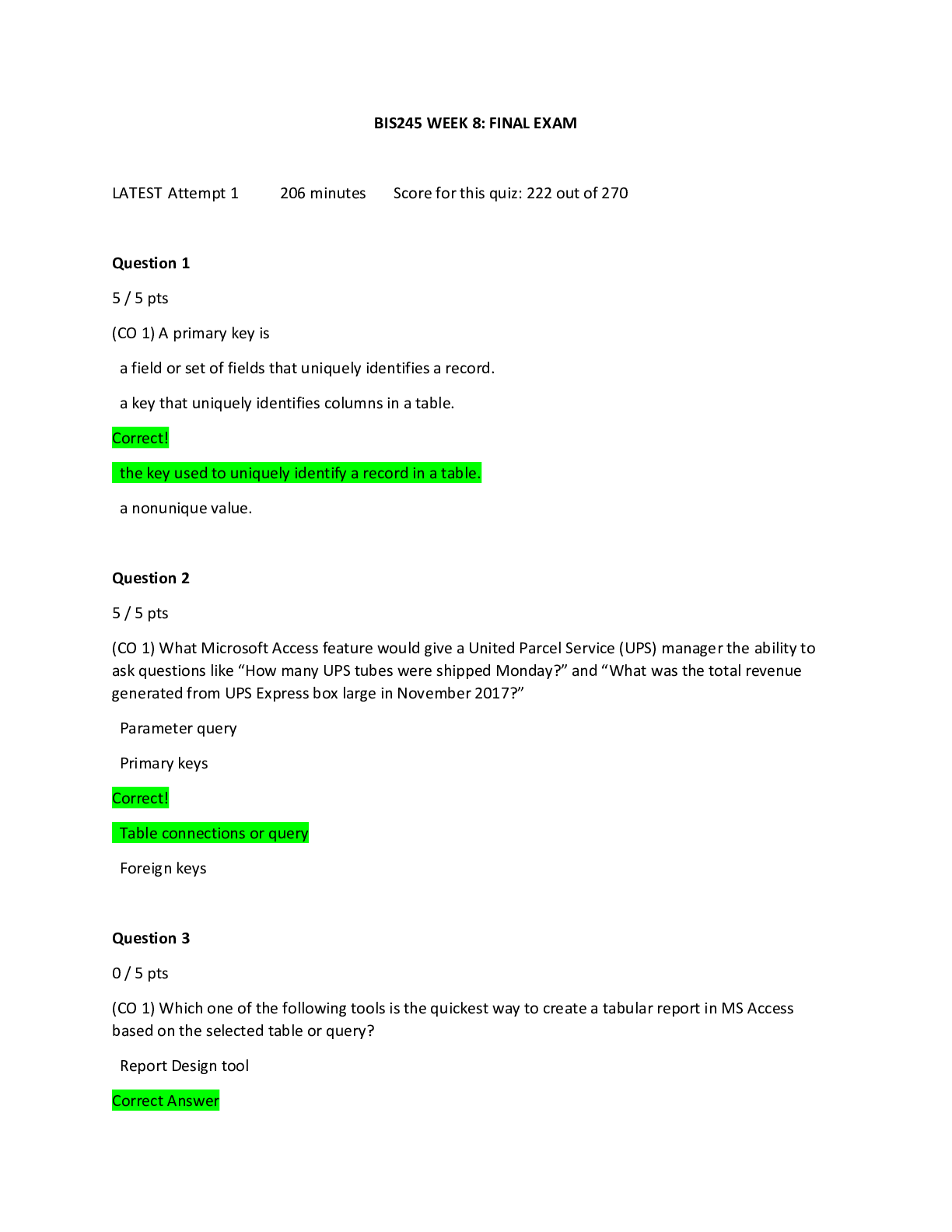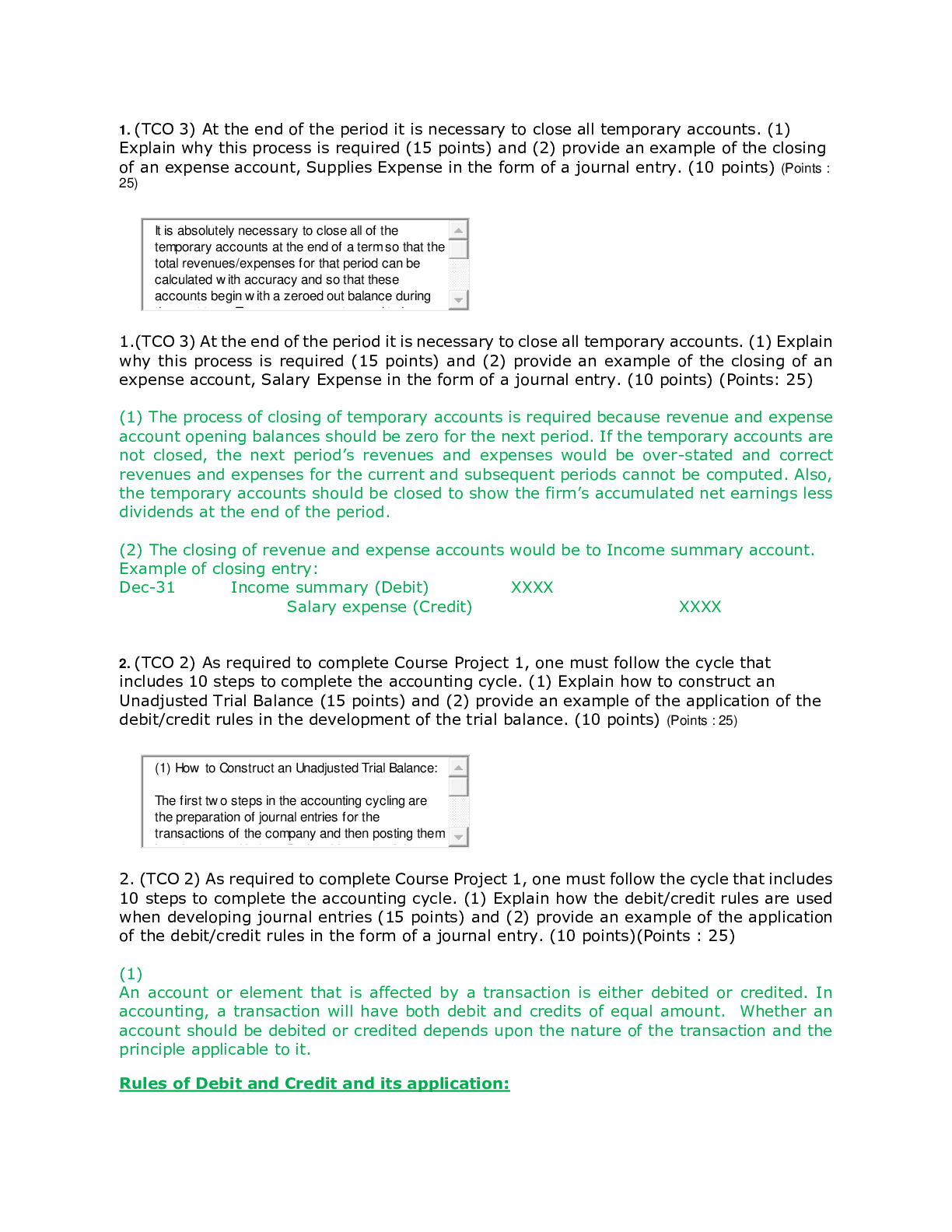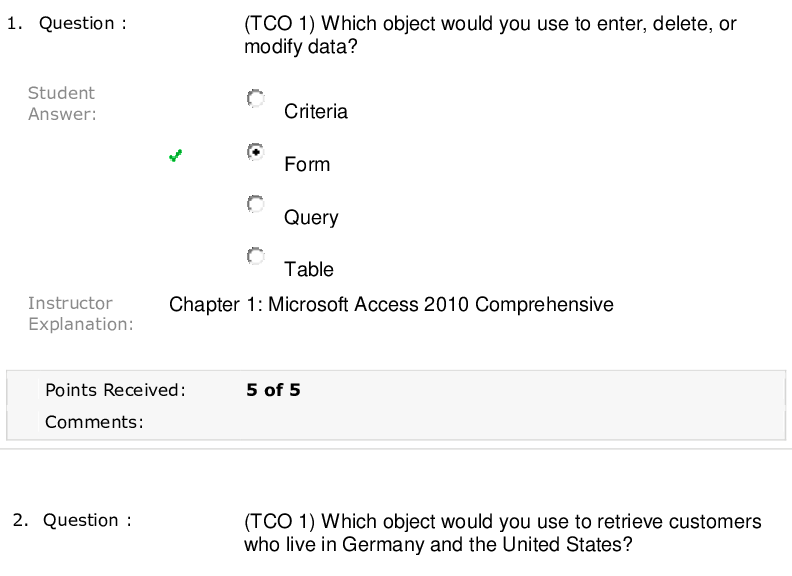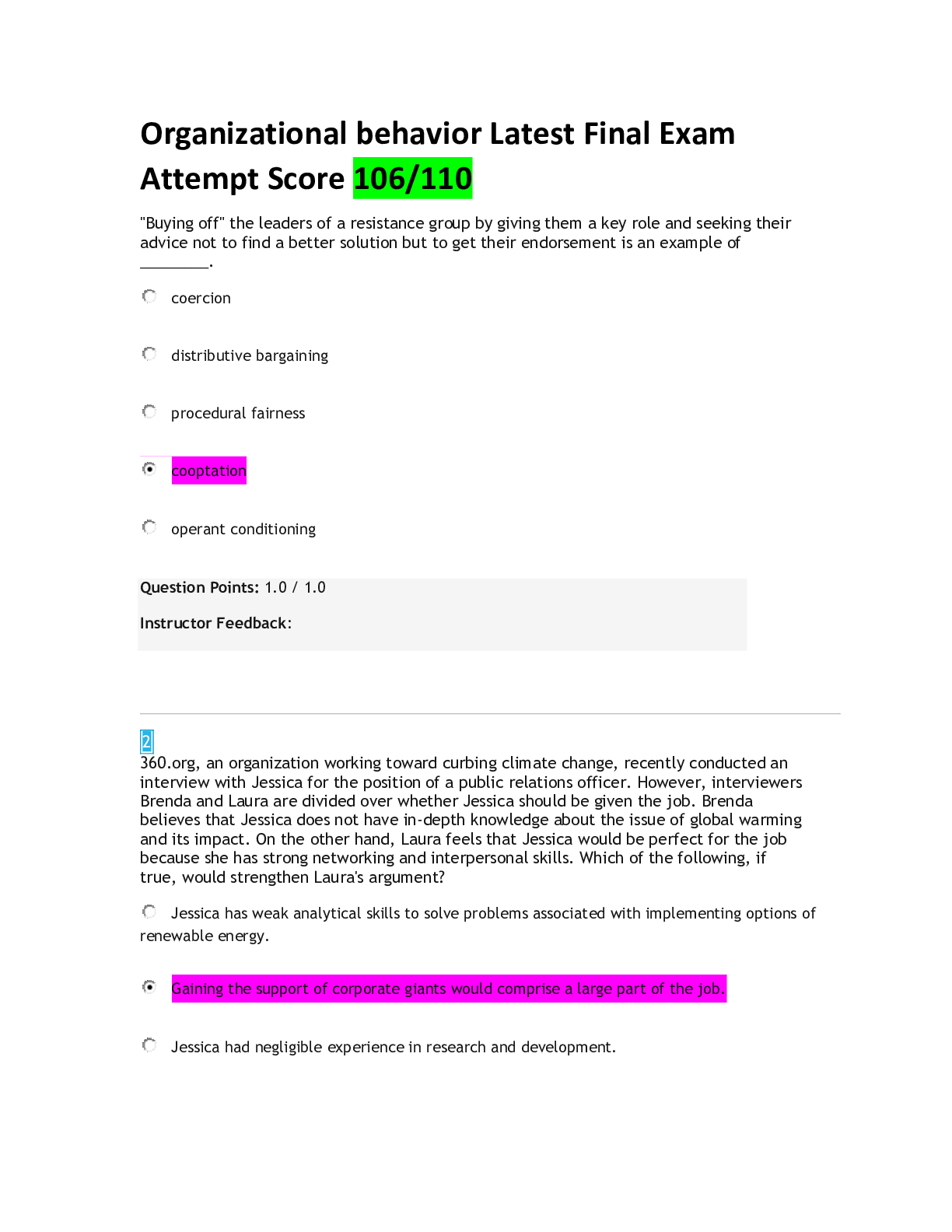healthcare > EXAM > HCMI 3240 Final Exam | Verified with 100% Correct Answers (All)
HCMI 3240 Final Exam | Verified with 100% Correct Answers
Document Content and Description Below
HCMI 3240 Final Exam | Verified with 100% Correct Answers True or False: Health care providers include physicians, hospitals, and insurance companies False True or False: Third party payers include ... employers and the government True Which of the following is not a factor behind the persistent growth of U.S. health care spending? A. Innovation: development of new medical technologies B. Expansion of public insurance programs to pay for them C. Generous reimbursement rates to health care providers D. increased cost-sharing by consumers E. Patients don't face the full price of medical care at the point of care True or False: Decentralized health care systems are better suited to achieve large-scale coordination False True or False: Pure premium equals expected medical cost True True or False: The primary purpose of cost-sharing is to reduce adverse selection True Currently, per capita health care spending in the USA is about.... 10,500 dollars The U.S. spends about _____ percent of its GDP on medical care 18 percent True or False: National health expenditure equals medical care personal expenditure False Reimbursement is directed towards which group in the health care system? A. Patients/ consumers B. Insurers C. Sponsors D. medical care providers What is the difference between coinsurance and deductibles? Coinsurance is when insurance only covers a fraction of health expenditure; deductible is the amount you have to pay before insurance kicks in What is the maximum amount of the actual premium this person would pay for an insurance policy? A. pure premium B. expected cost of medical care C. expected cost of medical care plus risk premium D. cost sharing E. copay When did employer-sponsored healthcare become popular in the U.S.? WWII Why would anyone pay more than the pure premium for healthcare insurance? Because avoiding risk is valuable to consumers True or False: the lead cause of increased medical spending is the aging of the population False Which of the following is the best example of moral hazard? A. not putting in an alarm system because you have home owner's insurance B. Leaving a broken headlight out on your car because you cannot afford to get it replaced C. choosing to drive a truck instead of an eco-friendly one D. quitting smoking True or False: One reason behind why prescription drug expenditures in the USA are higher than they are in similar affluent countries is that Americans consume more medicine on average. False True or False: The U.S. health care spending is greater than other comparable nations partly because of higher prices in the USA True Which of the following currently contributes the most to health care funds in the U.S.? a. Medicare b. Private non-group health insurance c. Out-pocket spending d. Medicaid True or False: Private insurers usually pay MDs by adjusting the Medicare fee schedule. Larger and more powerful physician practices usually receive higher private fees True Which of the following is not among the macro-level public health interventions? a. Filtering and chlorinating water supplies b. Building sanitation systems c. Draining swamps d. Pasteurizing milk e. Producing sulfa drugs All of the following contributed to improvements in health in the U.S. except: A. Economic growth and improved nutrition. B. Public health programs. C. Reduced obesity rates. D. Improvements in medical care. E. Prescription drug discoveries Cost sharing methods are used primarily to manage A. quality B. adverse selection C. excessive healthcare utilization D. stop loss provision E. DRG True or False: Employees within a firm have community-based premiums True True or False: In the 18th and 19th centuries, high infant mortality rates were mainly due to premature births False In which quality measure did the United States healthcare system performs equally well or better than other comparable nations? A. Female life expectancy at birth B. Male life expectancy at birth C. Youth life expectancy D. Infant mortality rate per 1,000 births E. Breast cancer 5-year survival rates Managed care plans differ according to the restrictiveness of their provider network and access to specialists. Which types of plans are likely to have the lowest premiums? A. Plans that have the largest ratio of primary care physicians to specialists B. Plans that have the most experience and have been in existence the longest C. Plans that have the most restrictive/narrow provider network D. Plans that have received the highest quality and outcome measures Medical spending is equal to... quantity of medical care X price + admin costs True or False: One reason behind why prescription drug expenditures in the USA are higher than they are in similar affluent countries is that Americans are in worse health. False Tax-exempt employer-purchased health insurance A. is of equal value to all employees regardless of their income. B. is primarily preferred by low-income employees who cannot afford health insurance. C. stimulates the demand for high-deductible coverage. D. results in a greater reduction of health insurance price for high-income employees. True or False: The highest amount of healthcare funds in the United States go to public health and home healthcare services False True or False: The stop-loss provision represents the ceiling (maximum) of the dollar amount that a patient can be hold responsible to pay out of pocket during the policy period True What is the gatekeeper model used by managed care plans? AN HMOs gatekeeper chooses a primary care physician, who then controls the enrollee's diagnostic and specialist referrals With a combination of variable reimbursement to providers and low consumer cost sharing, the likelihood of a large volume of medical expenditures will most likely be ________. a) high b) moderate c) low d) very low True or False: The Pareto principle of consumption (also known as the 80-20 rule) does not apply to medical care False True or False: Rationing is a heavily utilized cost containment method in the United States. False In Phase I (of the drug development process), the proposed drug is given to 20 to 80 healthy volunteers: a) To examine the cost-effectiveness of the drug b) To explore the treatment effectiveness of the drug c) To investigate the safety of the drug d) With the hope of helping those who suffer from severe illness Person 1 has a discount rate of 10%, and person 2 has a discount rate of 6%. Which person is more likely to seek preventive medical care? a) Person 1 b) Person 2 c) There is no way to determine d) Both of them e) None of them In which of the following specialties, physicians make the lowest income? a) Plastic Surgery b) Orthopedics c) Dermatology d) Pediatrics e) Cardiac surgery Per person hospital stay days went down because of the following, except: a) Aging population b) Those who receive inpatient care spend fewer days in hospitals c) More and more medical conditions can be treated in outpatient settings. d) Improved efficiency of prescription drugs Deaths due to Type I error are called "statistical deaths." a) True b) False One reason behind the increased market share of generic drugs is the financial incentives provided by the insurers. a) True b) False People who are more concerned about future generations would prefer a lower discount rate in calculating the NPV of social projects a) true b) false The cumulative probability of success for the drugs that pass the animal tests stage successfully is typically about 50%. a) True b) False Physicians are generally unhappy with Medicare payment rates. a) True b) False The DRG Payment System aimed to standardize the way Medicare pays hospitals. a) True b) False More than 75 percent of physicians run their own medical practice and have no partners (solo practice). a) True b) False Historically (before 1980s) drugs were generally produced from: a) Chemical substances b) Genetics c) Proteins d) Living organisms John values his own life at $7,000,000 per year. He currently works at Hospital A for a salary of $89,000 per year and has a 3/1,000 chance of death from working in the hospital. Hospital B offers John a job that pays $105,000 per year and has a 3/500 chance of dying from working in the hospital. Calculate the differential (extra) pay per-life due to increased death risk by hospital A. a) 1000 b) 18000 c) 16000 d) 15000 John values his own life at $7,000,000 per year. He currently works at Hospital A for a salary of $89,000 per year and has a 3/1,000 chance of death from working in the hospital. Hospital B offers John a job that pays $105,000 per year and has a 3/500 chance of dying from working in the hospital. Calculate the differential risk in mortality between Hospital A and Hospital B. a) 3/500 b) 0.006 c) 6/1000 d) 3/1000 e) 3/100 John values his own life at $7,000,000 per year. He currently works at Hospital A for a salary of $89,000 per year and has a 3/1,000 chance of death from working in the hospital. Hospital B offers John a job that pays $105,000 per year and has a 3/500 chance of dying from working in the hospital. Using the willingness to pay approach, what is the extra payment per life lost life paid by Hospital A. a) 5333333.333 b) 5.33 c) 2666666.667 d) 2.667 e) 16000 At the optimal quantity: a) Marginal cost is the lowest. b) Total benefit is the highest. c) Total net benefit is the highest. d) Marginal net benefit is positive. Both Medicare and Medicaid have similar eligibility requirements. a) True b) False At the optimal level of pollution: a) Pollution is the highest b) Pollution is the lowest c) Total benefit of pollution equals total cost of pollution d) Marginal benefit of pollution equals zero e) Marginal net benefit of pollution equals zero If the net present value of a project equals zero: a) One should invest in the project. b) One should not invest in the project. c) The return on the project equals to the return on the most attractive alternative. d) The discount rate is too high. e) The project term is too long [Show More]
Last updated: 9 months ago
Preview 4 out of 13 pages

Loading document previews ...
Buy this document to get the full access instantly
Instant Download Access after purchase
Buy NowInstant download
We Accept:

Also available in bundle (1)
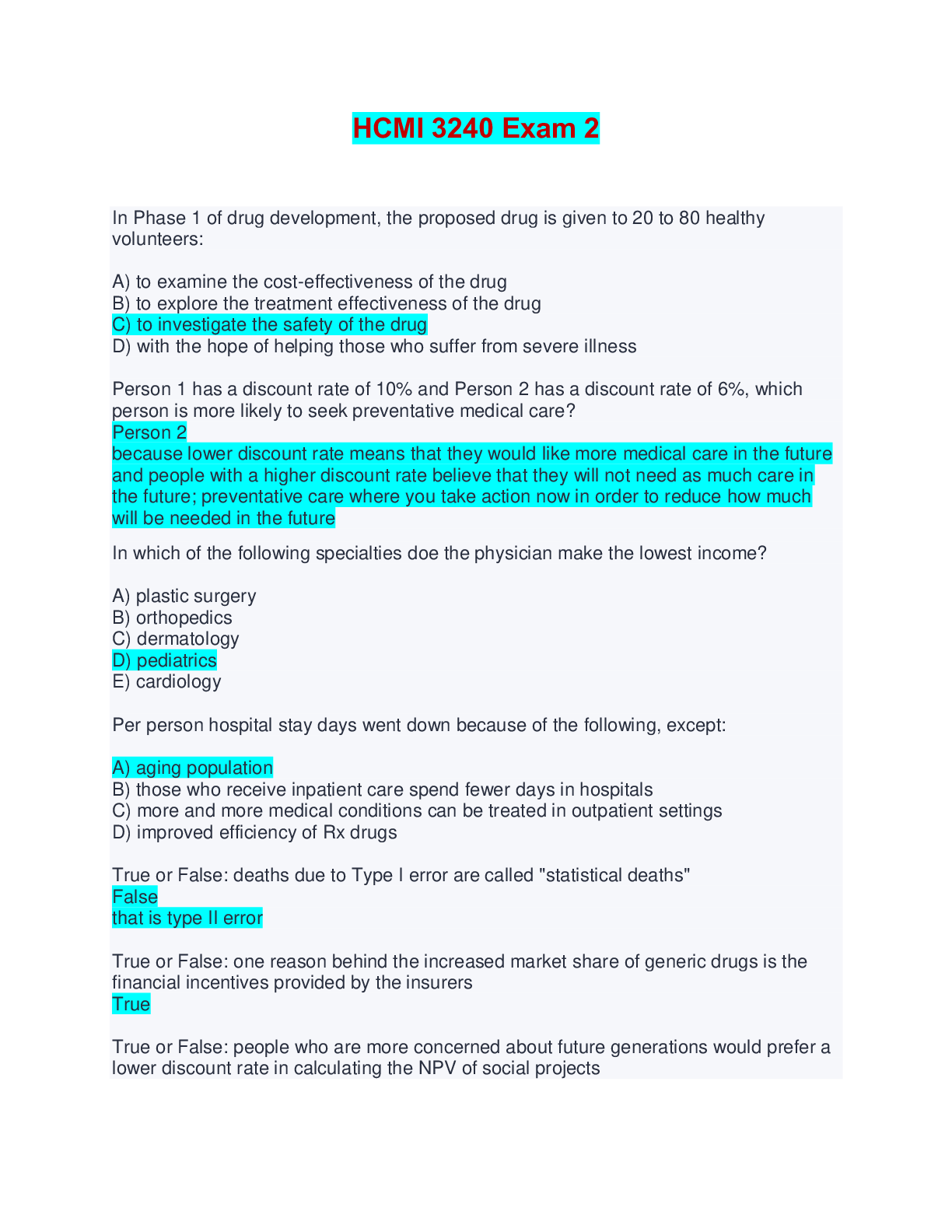
HCMI 3240 EXAM 2 AND FINAL EXAM BUNDLE
HCMI 3240 EXAM 2 AND FINAL EXAM BUNDLE
By Nurse Henny 9 months ago
$18
2
Reviews( 0 )
$15.00
Can't find what you want? Try our AI powered Search
Document information
Connected school, study & course
About the document
Uploaded On
Sep 25, 2024
Number of pages
13
Written in
Additional information
This document has been written for:
Uploaded
Sep 25, 2024
Downloads
0
Views
14

